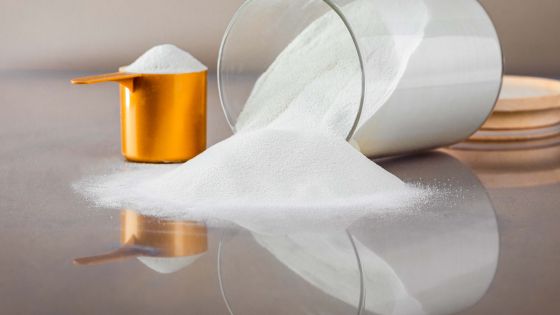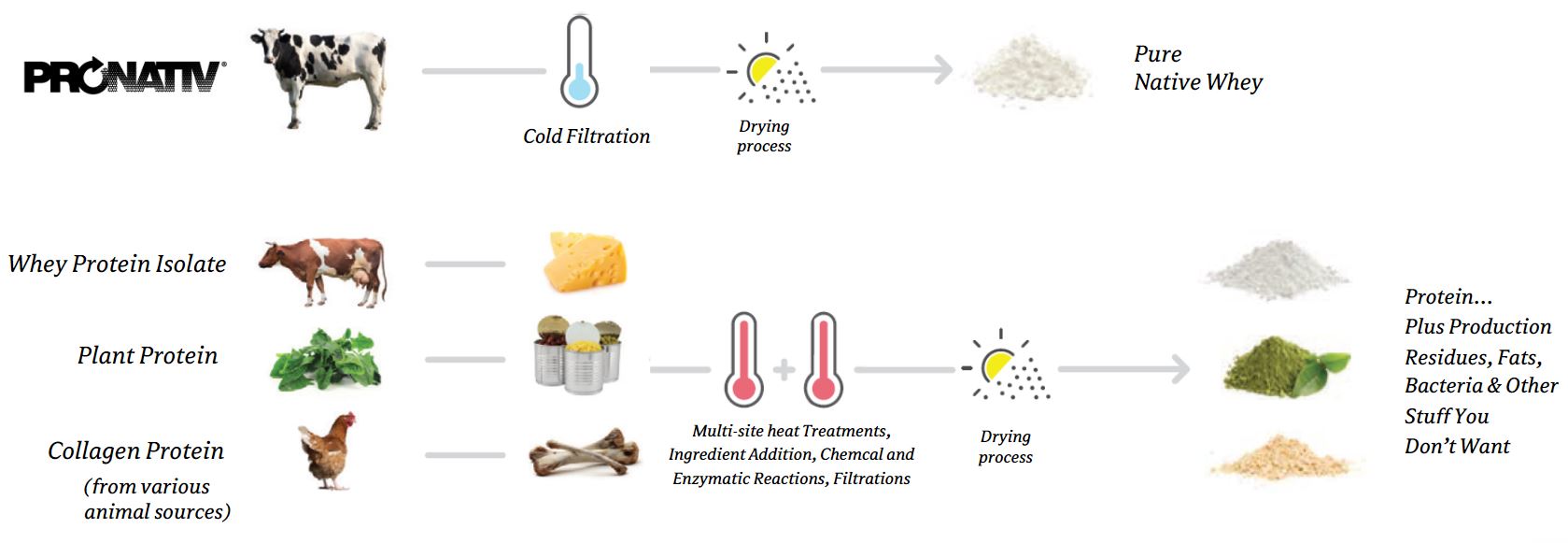
Navigating Whey Protein Differences: Natives vs. Standard
In the field of protein supplements, choosing between native whey protein and standard whey protein often depends on specific nutritional needs, different processing methods, and the specific benefits they offer.
Differences
Native Whey Protein
-
-
- Source and Production: Native whey protein is directly derived from milk and is not a by-product of cheese production. It is extracted using gentle methods such as cold filtration, thus preserving its natural components.
- Purity and Processing: It undergoes no chemical treatment, ensuring a natural and pure protein, ideal for those who prioritize ingredients without additives or chemicals.
- Amino Acid Profile: Native whey protein is distinguished by its complete amino acid profile, including a high concentration of essential amino acids like leucine, which promotes better muscle synthesis and recovery after training. Its bioavailability ensures rapid absorption, ideal for immediate protein needs.
-
Standard Whey Protein
-
-
- Source and Production: Standard whey protein is produced as a by-product of cheese manufacturing. It undergoes various treatments before being extracted.
- Processing: Standard whey protein is obtained after various treatments such as chemical reactions, enzymatic treatments, heat treatment, followed by drying.
- Amino Acid Profile: Standard whey protein also offers a rich profile of essential amino acids. However, it can vary in composition depending on production methods and treatments applied. This can influence how the proteins are used by the body for muscle development and overall health.
-

Representation of Processing Methods for Native Whey Proteins Pronativ and Standard Whey Proteins
Benefits of Native Whey Protein
Native whey protein is known for being minimally processed and thus for its purity. Additionally, its high content of essential amino acids like leucine makes it an effective option to support the needs of athletes and active individuals. Studies have shown better recovery with native whey proteins compared to standard whey proteins[1], as well as greater efficiency. In fact, 15g of NWP activates the same level of muscle synthesis as 30g of other proteins [2].
Benefits of Standard Whey Protein
Standard whey protein remains a popular choice due to its versatility and effectiveness. Its cost is also more accessible than native whey proteins. Despite the treatments, it offers a viable source of protein with a beneficial essential amino acid content for muscle recovery and overall health. Its ability to be used in various food products makes it a flexible option to meet the varied nutritional needs of consumers.
Versatility and Applications
Native whey protein stands out for its neutral taste and purity, making it suitable for a wide range of applications, from beverages to functional foods. Its compatibility with different recipes makes it an attractive choice for consumers seeking natural and highly effective protein options.
As for standard whey protein, its versatility also allows it to be used in a multitude of products, from protein shakes to energy bars, thus meeting a diverse range of preferences and nutritional needs.

To conclude, choosing between native whey protein and standard whey protein depends on health goals and supplementation preferences. Native whey protein stands out for its purity and bioavailability, ideal for rapid muscle recovery and minimal use of additives. Standard whey protein, on the other hand, offers proven effectiveness and versatility in food applications, meeting the varied protein needs of consumers.
Our native whey proteins, Pronativ®, have scientifically demonstrated their numerous benefits, making them reliable for your applications and consumers seeking quality protein. Both native and standard whey proteins significantly contribute to the diverse landscape of protein supplements available today, allowing you to best formulate products suited to the specific needs of your customers.
Any questions ? Contact-us !
Sources :
[1] Garcia-Vicencio S, Ratel S, Gryson C, Masgrau A, Piponnier E, Brasy J, Ruyet PL, Bucas M, Barachon N, Visseaux V, Connan Y, Montel F, Lahaye C, Boirie Y, Martin V. A Moderate Supplementation of Native Whey Protein Promotes Better Muscle Training and Recovery Adaptations Than Standard Whey Protein – A 12-Week Electrical Stimulation and Plyometrics Training Study. Front Physiol. 2018 Sep 19;9:1312. doi: 10.3389/fphys.2018.01312. PMID: 30319437; PMCID: PMC6168738.
[2] Gryson C, Walrand S, Giraudet C, Rousset P, Migné C, Bonhomme C, Le Ruyet P, Boirie Y. “Fast proteins” with a unique essential amino acid content as an optimal nutrition in the elderly: growing evidence. Clin Nutr. 2014 Aug;33(4):642-8. doi: 10.1016/j.clnu.2013.09.004. Epub 2013 Sep 13. PMID: 24090685.















